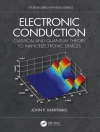It takes more e?ort to verify that digital system designs are correct than it does to design them, and as systems get more complex the proportion of cost spent on veri?cation is increasing (one estimate is that veri?cation complexity rises as the square of design complexity). Although this veri?cation crisis was predicted decades ago, it is only recently that powerful methods based on mathematical logic and automata theory have come to the designers’ rescue. The ?rst such method was equivalence checking, which automates Boolean algebra calculations.Nextcamemodelchecking, whichcanautomatically verify that designs have – or don’t have – behaviours of interest speci?ed in temporal logic. Both these methods are available today in tools sold by all the major design automation vendors. It is an amazing fact that ideas like Boolean algebra and modal logic, originating frommathematicians andphilosophersbeforemodern computers were invented, have come to underlie computer aided tools for creating hardware designs. The recent success of ‘formal’ approaches to hardware veri?cation has lead to the creation of a new methodology: assertion based design, in which formal properties are incorporated into designs and are then validated by a combination of dynamic simulation and static model checking. Two industrial strength property languages based on tem- ral logic are undergoing IEEE standardisation. It is not only hardwaredesignand veri?cation that is changing: new mathematical approaches to software veri?cation are starting to be – ployed. Microsoft provides windows driver developers with veri?cation tools based on symbolic methods.
Ganesh Gopalakrishnan
Computation Engineering [PDF ebook]
Applied Automata Theory and Logic
Computation Engineering [PDF ebook]
Applied Automata Theory and Logic
购买此电子书可免费获赠一本!
语言 英语 ● 格式 PDF ● ISBN 9780387325200 ● 出版者 Springer US ● 发布时间 2006 ● 下载 6 时 ● 货币 EUR ● ID 8168962 ● 复制保护 Adobe DRM
需要具备DRM功能的电子书阅读器












